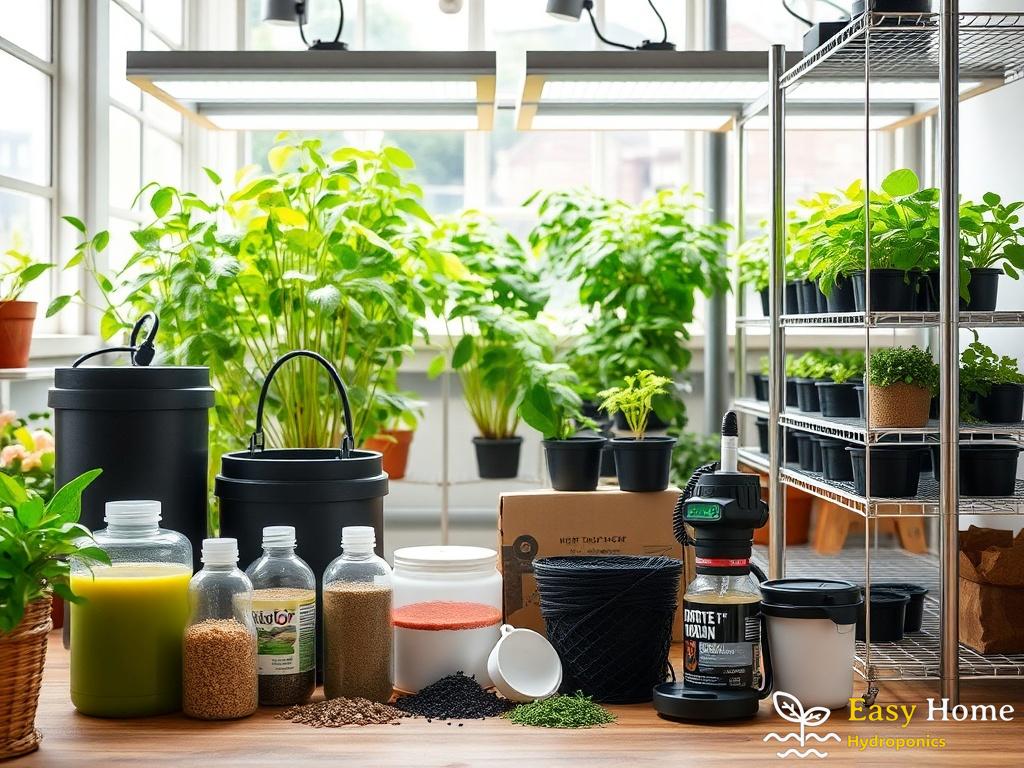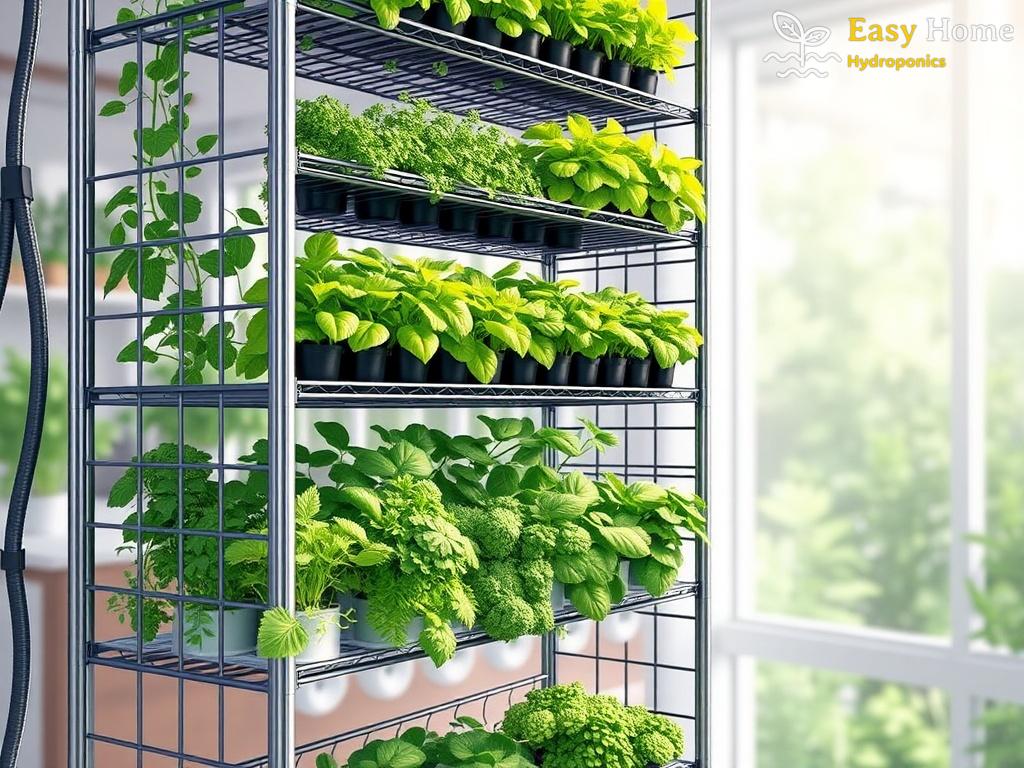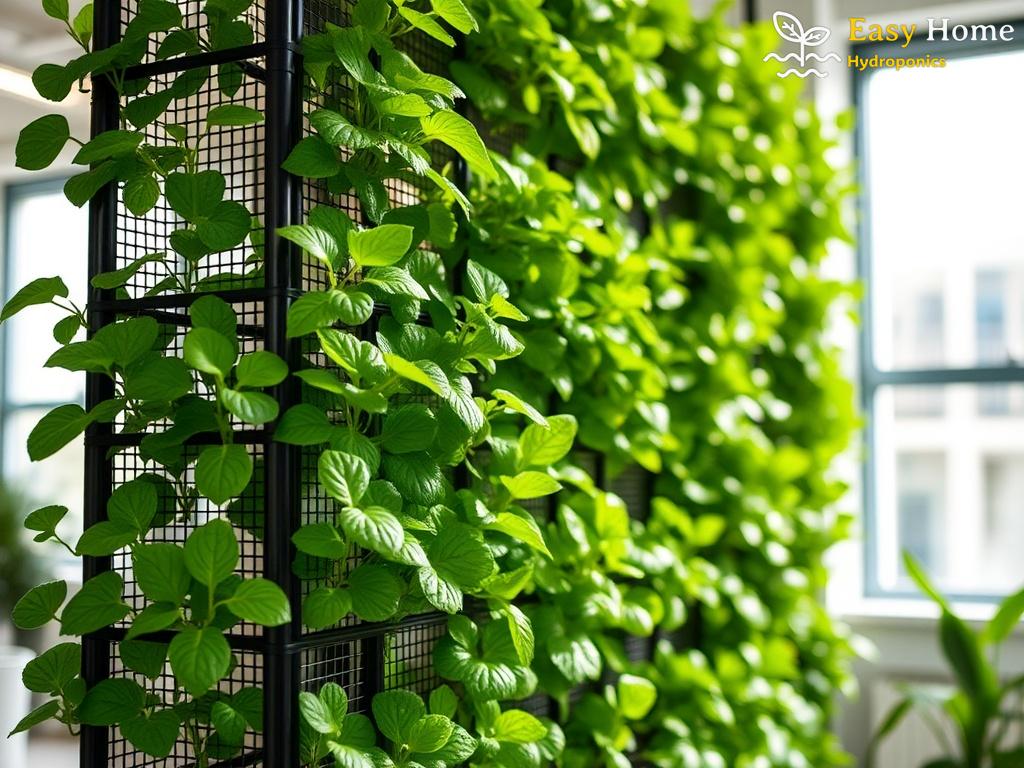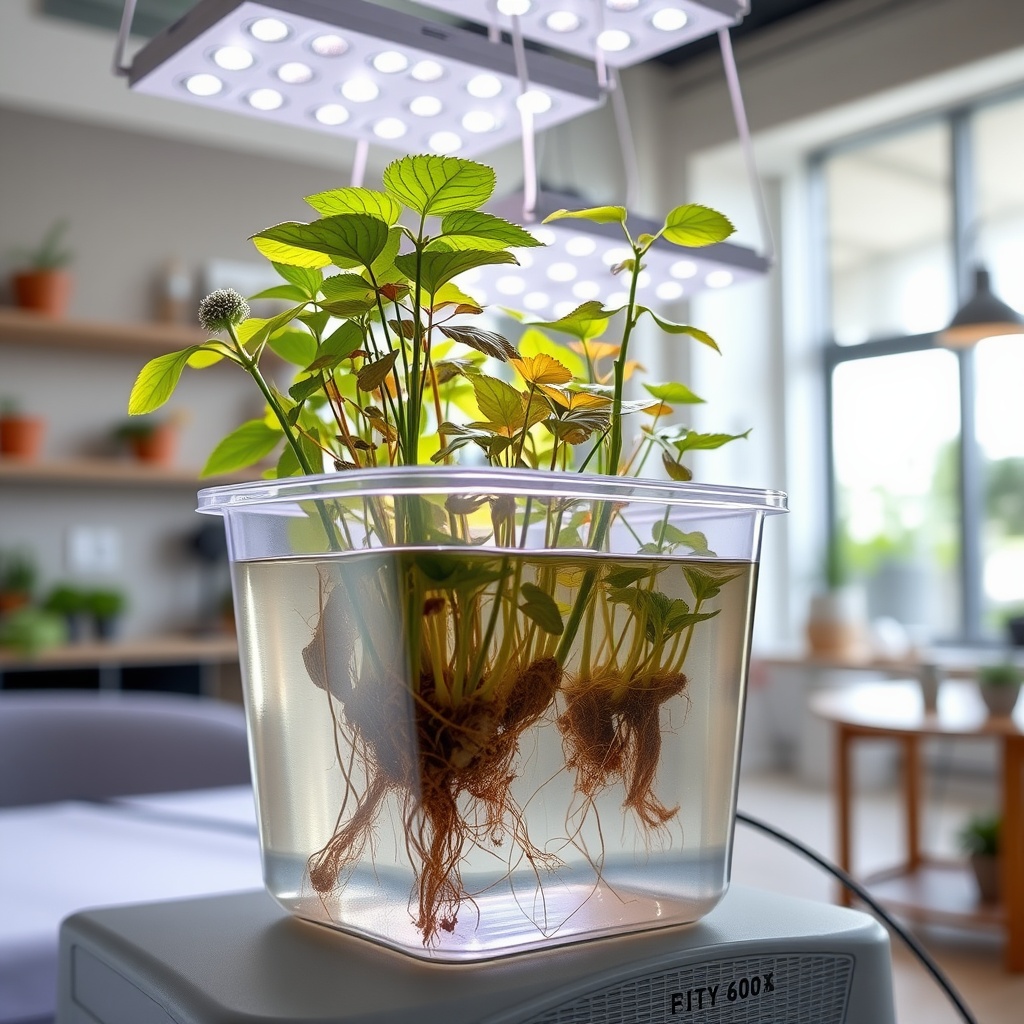Choosing the Right Wire Shelving for Your Hydroponic Garden
When it comes to setting up a vertical hydroponic garden, the foundation is key. Wire shelving provides a versatile and sturdy option for creating multiple levels for your plants. However, not all wire shelving is created equal. In this section, we will explore the essential features that make wire shelving suitable for hydroponic gardening, ensuring that your plants not only thrive but also have the support they need.
Choosing the right wire shelving involves more than just picking a random shelf; it’s about identifying the characteristics that will enhance your hydroponic setup. Here are some critical features to consider:
- Material: Opt for stainless steel or heavy-duty plastic to prevent rust and ensure longevity.
- Weight Capacity: Check the weight limit for the shelving; it should support the combined weight of the plants and the hydroponic system.
- Adjustable Shelves: Adjustable shelving allows for flexible plant heights as they grow, maximizing your garden’s potential.
- Size and Dimensions: Ensure the shelving fits your space, allowing room for water and light accessibility.
- Ease of Assembly: Look for shelving that is easy to assemble and disassemble should you need to relocate your garden.
Not all wire shelving options are equal in quality and functionality. Below is a comparison of three popular wire shelving brands that are well-suited for hydroponic gardening:
| Brand | Material | Weight Capacity | Adjustable Shelves | Price Range |
|---|---|---|---|---|
| Seville Classics | Steel | 300 lbs per shelf | Yes | $$ |
| AmazonBasics | Steel | 250 lbs per shelf | No | $ |
| Whitmor | Plastic | 150 lbs per shelf | Yes | $$$ |
By assessing these brands, you can make an informed choice that aligns with your hydroponic gardening goals, ensuring that you create a thriving vertical garden that is both functional and aesthetically pleasing.
Essential Tools and Materials for Vertical Hydroponics

Creating a flourishing vertical hydroponic garden requires not only the right shelving but also a selection of essential tools and materials that will facilitate plant growth and system efficiency. Equipping yourself with these items will ensure your hydroponic setup is not only functional but also thriving, giving your plants the best opportunity to flourish in an innovative and space-efficient manner.
Before diving into the construction of your vertical garden, it’s crucial to gather the right tools and materials that will support your hydroponic system. From nutrient solutions to lighting systems, each component plays a vital role in the overall success of your garden. Here’s a closer look at what you’ll need:
Nutrient Solutions: The lifeblood of your hydroponic garden, nutrient solutions supply essential minerals for your plants. Opt for pre-mixed solutions tailored for hydroponic systems to streamline the process and ensure balanced nutrition.
Grow Lights: Since many indoor spaces lack sufficient natural light, investing in high-quality grow lights is crucial. LED lights are energy-efficient and provide the right spectrum for plant growth, promoting photosynthesis even in low-light conditions.
In addition to the core components of your hydroponic system, having the right storage and maintenance tools is essential for sustainability. Proper care and management can significantly enhance the longevity of your vertical garden.
Water Pump and Reservoir: An efficient water pump ensures consistent water circulation, while a reservoir holds the nutrient-rich solution. Be sure to choose a pump that suits the size of your garden for optimal performance.
pH and EC Meters: Monitoring the pH and electrical conductivity (EC) of your nutrient solution is critical for ensuring that your plants are receiving the right levels of nutrients. Regular testing allows for quick adjustments, keeping your plants healthy and vibrant.
| Component | Function | Benefits |
|---|---|---|
| Nutrient Solutions | Provides essential minerals | Promotes healthy growth |
| Grow Lights | Supports photosynthesis | Enhances growth in low light |
| Water Pump | Circulates nutrient solution | Ensures even distribution |
| pH and EC Meters | Monitors nutrient levels | Prevents nutrient deficiencies |
By equipping yourself with these essential tools and materials, you set the stage for a successful vertical hydroponic garden. Each element works in harmony to create an environment where your plants can not only survive but thrive, showcasing the beauty and efficiency of hydroponic gardening.
Step-by-Step Guide to Assembling Your Vertical Garden
Building your own vertical hydroponic garden is an exciting venture that not only maximizes your growing space but also nurtures your green thumb. As you embark on this journey, having a clear roadmap can make the process smoother and more enjoyable. This guide will walk you through a detailed approach to assembling your vertical garden, ensuring that every step is not only informative but also engaging.
Start by visualizing the layout of your vertical garden. Before diving into assembly, it’s essential to plan how many shelves you will need and the arrangement of your plants. Consider factors such as sunlight exposure, plant height, and watering accessibility. Once you have a layout in mind, it’s time to gather your materials and tools, including the wire shelving units you’ve chosen, nutrient solutions, and lighting systems.
With your materials at hand, begin assembling your wire shelving. Start by following the instructions provided with your shelving units, ensuring all connections are secure. Pay special attention to the weight capacity of each shelf, as this will be crucial when placing your plants and hydroponic systems. Once the framework is complete, you can add your adjustable shelves, providing flexibility for plant growth.
Next, integrate your hydroponic system into the shelving. This may involve installing a water pump and reservoir to circulate your nutrient solution effectively. Make sure the system is positioned for easy access to water and maintenance. Don’t forget to check the alignment of your grow lights, as they play a vital role in the success of your garden. Position them above the plants to ensure maximum light exposure and promote healthy growth.
After your shelves are assembled and your hydroponic system is in place, it’s time to introduce your plants. Select plants that thrive in a vertical setup and ensure they receive adequate nutrients through your hydroponic system. Regularly monitor the pH and electrical conductivity of your nutrient solution to keep your plants healthy and vibrant. As your garden grows, be prepared to adjust shelf heights and lighting to accommodate their needs.
As you step back and admire your constructed vertical hydroponic garden, remember that the journey doesn’t end here. Continuous care and adjustments are key to maintaining a successful garden. With patience and dedication, your vertical garden will flourish, showcasing the beauty and efficiency of hydroponic gardening.
Selecting the Best Plants for Hydroponic Success
Embarking on the journey of building a vertical hydroponic garden means not only focusing on the structure but also carefully choosing the right plants to cultivate. The success of your hydroponic system heavily relies on selecting plants that thrive in a hydroponic environment. Therefore, understanding which plants are best suited for this innovative gardening method is essential for achieving vibrant growth and bountiful harvests.
When selecting plants for your hydroponic garden, consider their growth habits and nutritional needs. Leafy greens, such as lettuce, spinach, and kale, are ideal choices due to their fast growth rates and minimal space requirements. These plants not only flourish in a hydroponic setup but also provide a continuous harvest, making them perfect for beginners and seasoned gardeners alike. Additionally, herbs like basil, mint, and cilantro thrive in hydroponic systems, adding flavor and aroma to your culinary endeavors.
It’s crucial to pay attention to the light and nutrient requirements of each plant. For instance, while herbs may require more light to develop robust flavors, leafy greens are more forgiving and can adapt to lower light conditions. Understanding these preferences will enable you to create an environment that maximizes growth and minimizes stress.
If you’re looking to expand your garden beyond greens and herbs, consider incorporating fruiting plants like strawberries, tomatoes, and peppers. These plants can thrive vertically with the right support and care. When growing fruiting plants, keep in mind that they often require more robust nutrients and larger containers to accommodate their root systems. Therefore, be prepared to adjust your nutrient solution accordingly to ensure they receive the essential minerals for optimal growth.
Moreover, using trellises or netting can help support the upward growth of these plants, allowing you to maximize your vertical space while reaping the benefits of fresh fruits. As you select your fruiting plants, consider their compatibility with your hydroponic system and the amount of light they need to produce a bountiful harvest.
Incorporating a variety of plants not only enhances the aesthetic appeal of your vertical garden but also creates a dynamic ecosystem where plants can benefit from each other’s presence. For instance, growing nitrogen-fixing plants alongside your leafy greens can improve soil health and support growth, further boosting your garden’s overall productivity.
Maintenance Tips for a Thriving Vertical Hydroponic System
To ensure your vertical hydroponic garden flourishes, consistency is key. Regular monitoring of your system enables you to catch potential issues before they escalate. Begin by checking the nutrient solution levels every week. Hydroponic systems rely on a delicate balance of nutrients, and fluctuations can lead to deficiencies or excesses that weaken your plants. Observing changes in the plants’ color or growth patterns can provide insight into their needs. If you notice yellowing leaves, it might indicate a nitrogen deficiency, while burnt leaf edges could point to excess nutrients.
Moreover, pH levels are vital for nutrient uptake. Maintaining a pH range of 5.5 to 6.5 ensures optimal nutrient absorption. Invest in a reliable pH meter and test regularly, adjusting the solution as necessary.
Light is a fundamental aspect of plant growth, especially in a vertical hydroponic setup where light distribution can vary. As plants grow, their light requirements may change. Ensure your grow lights are positioned correctly, providing adequate coverage for all levels of your shelving. Rotate your plants regularly to promote even growth and prevent any one side from becoming leggy.
In addition to lighting, monitoring temperature and humidity is crucial. Most hydroponic plants thrive in temperatures between 65°F to 75°F. If your indoor garden is too warm, consider using fans or ventilation systems to maintain an optimal environment. Remember, too much humidity can lead to mold and pests, so keeping an eye on moisture levels will help ensure a healthy atmosphere for your plants.
Establishing a routine maintenance schedule is essential for the longevity of your vertical hydroponic garden. Regularly clean your reservoir and piping to prevent algae buildup and blockages that can hinder water flow. A simple vinegar solution can be effective for this purpose.
Don’t forget to check for any signs of pests or disease, as these can spread quickly in a densely packed vertical garden. Implementing preventive measures, such as introducing beneficial insects or using organic pest deterrents, can significantly reduce the risk of infestations. Regularly inspecting your plants allows you to catch any issues early on, ensuring your hydroponic system remains a thriving ecosystem.
By focusing on these maintenance strategies, you will not only keep your vertical hydroponic garden healthy but also enhance its productivity. The effort you put into monitoring, adjusting, and caring for your plants will ultimately yield delightful rewards in the form of lush greens and vibrant fruits.




